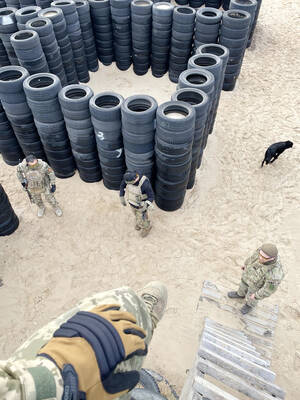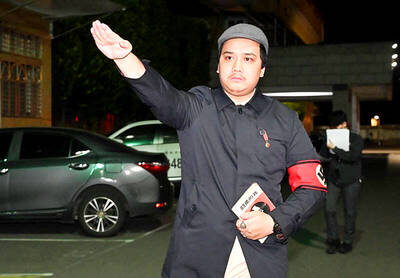13 Hours: The Secret Soldiers of Benghazi
We’re done talking about recent movies being based on books these days. For now, original stories are the anomaly in mainstream cinema, and that’s a given fact. This Michael Bay-produced and directed war movie is based on Mitchell Zuckoff’s book of the same name, which chronicles 13 hours of the Sept. 11, 2012 Benghazi attack, where Islamic militants attacked an American compound in Libya and killed US ambassador Christopher Stevens. The film focuses on a group of CIA security contractors who try to defend the compound. Though the film bills itself as a true story, it’s been criticized by many, including those involved in the incident, as being historically inaccurate, but if you just take it as a pretty cool action movie, it should prove to be entertaining.
Anomalisa
Don’t bring your kids to this animated film, folks. This surreal Charlie Kaufman dark comedy, based on his 2005 play of the same name, has made history by being the first R-rated film to be nominated for Academy and Golden Globe best animated feature awards as well as the first animated film to win the Grand Jury Prize at the Venice Film Festival. The story follows an inspirational speaker who arrives in Cincinnati to promote his book. Kaufman wrote the original play under the pen name of Francis Fregoli — in which the surname refers to the psychological condition where a person is under the delusion that different people are actually the same person who is able to alter his or her appearance. Incidentally, the protagonist checks into the Fregoli Hotel in the film, and … well, this is a Kaufman film, which, like Adaptation and Synecdoche, New York, are quite hard to explain in one paragraph.
The End of the Tour
Based on (see, told you) the 2010 memoir Although of Course You End Up Becoming Yourself by Rolling Stone writer David Lipsky about his five-day road trip with troubled and immensely talented author David Foster Wallace during the promotional tour of Wallace’s 1996 novel Infinite Jest, which eventually put him on the literary map. The book is literally a transcript of Lipsky’s conversations with Wallace, which he published after Wallace committed suicide in 2008 (the Rolling Stone profile was never published), which is where the film begins. Director James Ponsoldt, who is a huge Wallace fan, says this film is not a biopic — he stresses that it’s first and foremost based on Lipsky’s book and how Wallace was in a very short time period in the company of Lipsky. “This is something that is deeply subjective,” Ponsoldt says in an interview with Indiewire, “which seems like a much more honest approach to taking on someone’s life.”
Jeruzalem
The found-footage horror craze has reached Israel — and guess what the “z” stands for? That’s right, zombies. This movie opens with a line from the Talmud: “There are three gates to hell: one in the desert, one in the ocean and one in Jerusalem.” It features two Jewish-American tourists who are ready to party in Tel Aviv but instead meet a dashing dude who convinces them to go to Jerusalem, where the gate of hell opens and the city is thrown into chaos. Much of the film is seen through one of the tourists’ smart glasses (she loses her prescription glasses and has to wear the smart glasses all the time,which provides a convenient excuse for continuous found footage). The film bills the disaster as a Biblical apocalypse — but do zombies appear in the holy book? Some say they do.
Galaxy Turnpike
This is Japanese weirdness at its finest. The trailer for this science-fiction comedy set in the year 2265 opens by introducing in rapid-fire succession about 15 characters and then throws in a few wacky sequences and abruptly ends, and we can only imagine how frenetic the actual movie will be. Anyway, the synopsis gives us a few more clues: much of it is set in a 150-year-old space burger restaurant on Route 24666, which connects Earth to a colony between Saturn and Jupiter, and all those characters in the trailer are probably either the proprietors or alien customers. It’s completely over-the-top, ridiculous stuff that will probably leave you wondering “what the hell did I just watch,” but that’s kind of the appeal of wacky Japanese comedies.

Even by the standards of Ukraine’s International Legion, which comprises volunteers from over 55 countries, Han has an unusual backstory. Born in Taichung, he grew up in Costa Rica — then one of Taiwan’s diplomatic allies — where a relative worked for the embassy. After attending an American international high school in San Jose, Costa Rica’s capital, Han — who prefers to use only his given name for OPSEC (operations security) reasons — moved to the US in his teens. He attended Penn State University before returning to Taiwan to work in the semiconductor industry in Kaohsiung, where he

On May 2, Chinese Nationalist Party (KMT) Chairman Eric Chu (朱立倫), at a meeting in support of Taipei city councilors at party headquarters, compared President William Lai (賴清德) to Hitler. Chu claimed that unlike any other democracy worldwide in history, no other leader was rooting out opposing parties like Lai and the Democratic Progressive Party (DPP). That his statements are wildly inaccurate was not the point. It was a rallying cry, not a history lesson. This was intentional to provoke the international diplomatic community into a response, which was promptly provided. Both the German and Israeli offices issued statements on Facebook

May 18 to May 24 Pastor Yang Hsu’s (楊煦) congregation was shocked upon seeing the land he chose to build his orphanage. It was surrounded by mountains on three sides, and the only way to access it was to cross a river by foot. The soil was poor due to runoff, and large rocks strewn across the plot prevented much from growing. In addition, there was no running water or electricity. But it was all Yang could afford. He and his Indigenous Atayal wife Lin Feng-ying (林鳳英) had already been caring for 24 orphans in their home, and they were in

Australia’s ABC last week published a piece on the recall campaign. The article emphasized the divisions in Taiwanese society and blamed the recall for worsening them. It quotes a supporter of the Taiwan People’s Party (TPP) as saying “I’m 43 years old, born and raised here, and I’ve never seen the country this divided in my entire life.” Apparently, as an adult, she slept through the post-election violence in 2000 and 2004 by the Chinese Nationalist Party (KMT), the veiled coup threats by the military when Chen Shui-bian (陳水扁) became president, the 2006 Red Shirt protests against him ginned up by